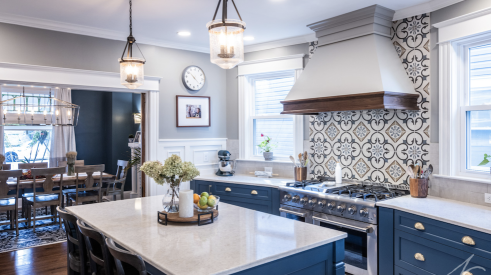Operating a remodeling business using fixed price contracts (a requirement in my state) can be a challenge for predicting and managing job costs. And I’ve found that the practice of thoroughly estimating and tracking gross profits builds discipline, accountability, and teamwork
I enjoy the challenge associated with this part of this business. It’s the life blood that helps us grow and create opportunity for our team. In our company, we’ve been maintaining a job cost variance of plus or minus 1% for the last several years. Here’s what works for us in achieving that performance:
1. Rationally Define Job Cost
Many companies have slightly different views of what should be included in job cost. I’m a big believer in only incorporating items that are directly related to a project AND can be individually billed by the unit or the hour. In our case, this includes design, labor, materials, and other direct billed costs such as permits, inspections, and dump fees. We don’t allocate any other costs that can’t be easily tracked and measured against the project such as vehicles, warehousing, and project management.
Our Project Managers divide their time between multiple jobs based on their own judgement of what is needed. It’s just not productive or efficient to have them track their time or allocate it based on revenue and it just clutters up a job gross profit report and hides the significant issues. Our mark-up factor includes these and other job-related costs.
2. Provide Just Enough Resolution
Keeping the direct job cost categories reasonable allows you to break them down into a few sub-categories that provide more insight. This is especially true for labor and materials. For example, in-house trade labor might be broken into demolition, rough carpentry, electrical, plumbing, finish carpentry, and clean-up. We make this information available to all the key players in the project team throughout the project.
This level of resolution enables us to learn how well we performed against the estimate, and also see any skill gaps in our team based on the hours consumed. It’s also important to instill discipline in the field labor team and make it easy for them to log their time via simple mobile time keeping tools.
3. Build Discipline in Estimating
We enable our project developers (who sell our projects) to manage the estimating process using a common system aligned with firm pricing policies. This ensures that they provide realistic estimates to our homeowner clients, are accountable for pricing consistently with the scope and budget ranges they provided to the clients, and price projects aligned with our gross profit targets.
In-house labor and material costs for many common tasks are built into the system and our most common projects— kitchens, baths, and additions— have templates which provide a starting point. Each of the estimate categories are mapped into our cost of goods schedule.
4. Provide Clear Accountability with Aligned Incentives
To keep a balance, our project developers are compensated based on the estimated and actual gross profit percentages the projects achieve with downside or upside adjustment based on variances. We’ve also added bonuses for project managers, supervisors, field labor, and our design team based on the amount of impact they have on the project’s financial performance.
This helps ensure strong alignment and partnership between them and our project developers. Our field labor participates in a team bonus structure based on how well they perform as a group solely against our labor estimates.
5. Conduct Reasonable Job Reviews
In addition to regular communication between the project developers and project managers, we also conduct a final review with the whole team including finance, production, design, and sales. This is not an inquisition. The intent is to hold an open, honest assessment of issues that caused variances in our estimated numbers versus the final actual costs. When the project team prepares in advance of the review and identifies discrepancies, the session can always be completed in less than one hour.
6. Act, Adjust, and Improve
Of course, these reviews are of little benefit unless we apply what we learned to future projects. We assign action items during the reviews. These could be changes to the estimating data or assumptions, process improvements, enhancements to our contracts, or better communication practices. And sometimes, we just make mistakes as human beings that don’t require a process or policy change.
A culture of accountability without fear of reprisal or embarrassment enables us to differentiate actual process problems from simple, one-time errors. This, in turn, helps the team feel empowered to keep learning and improving.
Add new comment
Related Stories
10 Things To Consider As Part of Your Q3 Review
The third quarter is when you need to review your company’s performance and reevaluate plans for the rest of the year
The Power of Storytelling
Kelly Parker, the keynoter at the 2024 Women in Residential+Commercial Construction Conference, on the importance and difficulty of telling a simple story
3 Areas Successful Remodelers Focus On
Industry advisor Mark Richardson shares what separates the losing from the winning in today’s market
Peppermill Finish
NAHB: Remodelers Face Challenges and Opportunities
Remodelers face a uniquely strong market yet remain challenged by codes and costs
The Neal’s Way Means Putting People First
For Neal’s Design Remodel, company culture is more than values on a wall. It’s everything.
Selling Your Company to Your Team
From company valuation to terms of the transfer, here’s a look at how three different remodelers made the deal work
NAHB Announces Action Plan for Housing Affordability
Six of the proposed 10 action items are important to residential remodelers
10 Different Questions You Should Ask Potential Clients
Mark Richardson says you need to rethink the questions you ask potential clients and the way in which you ask them













